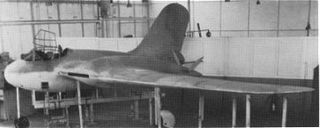M
(M&D Flugzeugbau, Germany)
(Moscow Aviation Institute)
(Juan J. Maluquer, Wahl & Gimeno)
(T.H. Marcho-Silesia / Akad. Fliegerschaft Marcho-Silesia)
(Wladyslaw Gallara / O.O.Marianów Secondary Convent School)
(Domenico Farina / Marinavia Farina SRL)
(Jim Marske, Marion Ohio, United States)
(E.D. Massia & Gaston Biot)
(Jiri Matejcek / students of the Central Aeronautical Institute, Brno-Medlanky)
(Irwin Rue, Lyle Maxey – built by Franck Kearns)
(Oldřich Mayer / Oskar Mayer / Státní průmyslová škola, Moravská Ostrava-Vítkovice / Letov)
(Zaklady Lotnicze Marganski & Myslowski Spolka z o.o. – Margański & Mysłowski Aviation Works) (MDM – Marganski, Dunowska, Makula)
(Michel-Lorenz Meier Hamburger Aero Club)
(Ob.-Ing. Erich Meindl / Burgfalke Flugzeugbau)
(Wilhelm Emil Messerschmitt / Messerschmitt AG / Bayerische Flugzeugwerke (BFW))
(Meteor C.A., Monfalcone)
- Horst Meusel / Verein für Luftfahrt e.V., Zittau)
- Meusel M-IV
(Milbert / Hamburger Flugzeugbau (?))
(Miliunas & Oshkinis / Miliunas & Kontrimas)
(Gustaw Mokrzycki, Ludwig Moczarski, Jan Idzkowski & Jerzy Ploszajski / Warsaw Technical High School)
(Jindřich Mišurec & Norbert Pučan, Brno)
(Don Mitchell (aircraft designer))
(Turkish: Makina ve Kimya Endüstrisi Kurumu - Mechanical and Chemical Industry Corporation)
(Mlody Lotnik - Antoni Uszacki)
(Flugzeugbau Möller / Ing. Hans Gunther Möller)
(L.P. Moore, J. Gibson & K. Emslie / The Birmingham Guild Ltd.)
(Alberto & Piero Morelli / Aeromere / CVT / Avionautica Rio / CARMAM)
(Angelo Mori, GVV Tommaso Dal Molin, Varese)
(Moswey Segelflugzeug-Werke) – (Georg & Heinrich Müller)
(P. Motiekaitis - Lithuania)
(MRSz - Magyar Repülési Szövetség Központi Műhelye)
(Avions Mudry Cie, Port d'attache, Cannes Mandelieu)
(Műegyetemi Sportrepülő Egyesület – BME Sportrepülő Association)
(Musachevo glider workshop / L. Panov and D. Panchovsky, R. Radomirov, D. Panchovski & Vlychev )

The Fieseler Fi 103R, code-named Reichenberg, was a German manned version of the V-1 flying bomb. It was developed towards the end of the Second World War and was intended to be used as a human-guided bomb in likely-suicidal attacks against the advancing Allies.

Wilhelm Emil "Willy" Messerschmitt was a German aircraft designer and manufacturer. In 1934, in collaboration with Walter Rethel, he designed the Messerschmitt Bf 109, which became the most important fighter aircraft in the Luftwaffe as Germany rearmed prior to World War II. It remains the second most-produced warplane in history, with some 34,000 built, behind the Soviet Ilyushin Il-2. Another Messerschmitt aircraft, first called "Bf 109R", purpose-built for record setting, but later redesignated Messerschmitt Me 209, broke the absolute world airspeed record and held the world speed record for propeller-driven aircraft until 1969. Messerschmitt's firm also produced the first jet-powered fighter to enter service – the Messerschmitt Me 262.

The Messerschmitt Me 328 was a prototype pulsejet-powered fighter aircraft designed and produced by the German aircraft manufacturer Messerschmitt AG.

The Messerschmitt Me 321 Gigant was a large German cargo glider developed and used during World War II. Intended to support large-scale invasions, the Me 321 had very limited use due to the low availability of suitable tug aircraft, high vulnerability whilst in flight, and its difficult ground handling, both at base and at destination landing sites. The Me 321 was developed, in stages, into the six-engined Messerschmitt Me 323 Gigant, which removed some of the problems with ground handling, although the payload was reduced. Vulnerability to ground fire and aerial attack remained a constant problem during operations of all variants.

The Messerschmitt Me 323 Gigant ("Giant") was a German military transport aircraft of World War II. It was a powered variant of the Me 321 military glider and was the largest land-based transport aircraft to fly during the war. In total, 213 were made, with 15 being converted from the Me 321.

The General Electric CJ610 is a non-afterburning turbojet engine derived from the military J85, and is used on a number of civilian business jets. The model has logged over 16.5 million hours of operation. Civilian versions have powered business jets such as the Learjet 23 and the Hamburger Flugzeugbau HFB 320 Hansa Jet. The engines are also used in the flyable Messerschmitt Me 262 reproductions built by the Me 262 Project in the United States.

The Junkers Ju 322 Mammut was a heavy transport military glider, resembling a giant flying wing, proposed for use by the Luftwaffe in World War II; only two prototypes were completed, a further 98 were scrapped before completion.

The Messerschmitt Me 329 was a design project for a heavy fighter and ground-attack aircraft, developed towards the end of World War II. It was a competitor and possible successor to the Me 410. Like the Me 265, the Me 329 used an advanced flying wing design. Other advanced features included the pilot and navigator sitting side by side in a broad bubble canopy, and a remote-controlled rear gun in the tail. In spite of the futuristic design, the improvement in performance over the Me 410 was marginal. Development received a low priority, and while a full-scale glider was tested at Rechlin in the winter of 1944/5, work on the project was cancelled shortly after.

The IMAM Ro.58 was an Italian twin-engined, two-seat monoplane heavy fighter and attack aircraft, a development of the IMAM Ro.57. First flown in May 1942, it was considered a general improvement over its predecessor, mainly due to the substitution of higher power Daimler-Benz DB 601 engines for the Fiat A.74 engines used on the Ro.57. Initially it had many problems and during the maiden flight only the proficiency of the test pilot, Adriano Mantelli, saved the plane.

The US Southwest Soaring Museum is an aviation museum, located at 918 E US Route 66, in Moriarty, New Mexico, United States that focuses on the history of gliding in the western United States. The museum is an affiliate member of the Soaring Society of America.
This page is based on this
Wikipedia article Text is available under the
CC BY-SA 4.0 license; additional terms may apply.
Images, videos and audio are available under their respective licenses.









